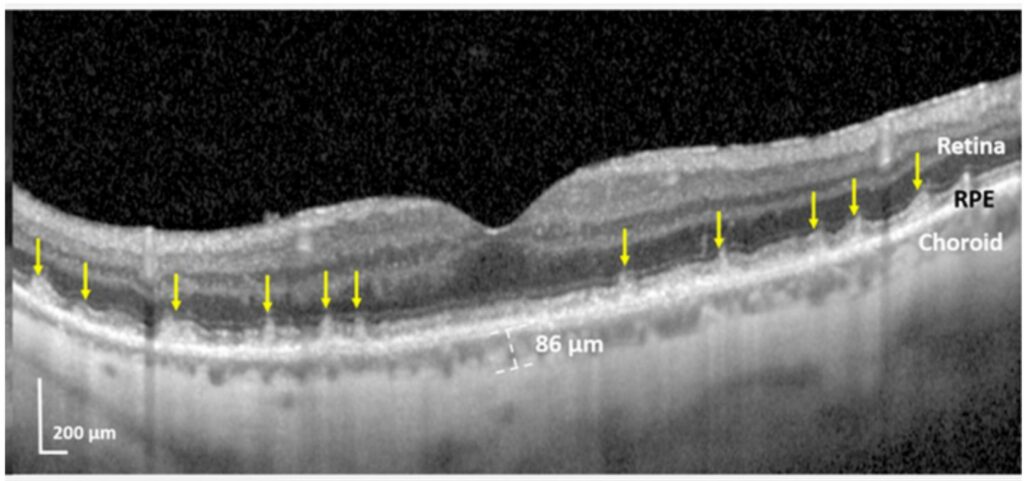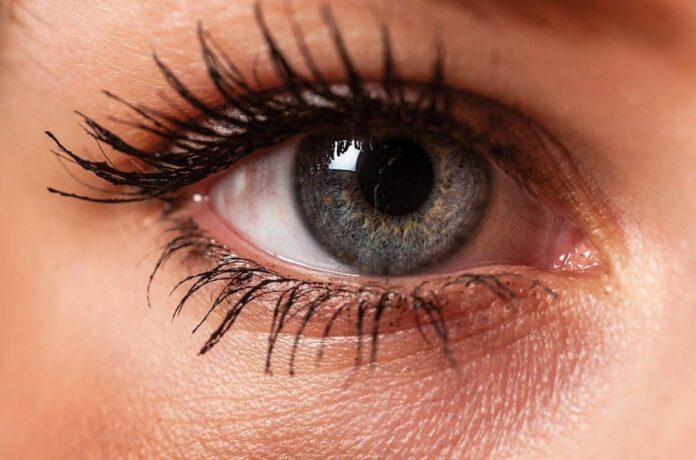This study is the first to find a strong link between age-related macular degeneration (AMD), a leading cause of blindness in the U.S. and heart disease, the most common cause of death around the world.
A new study from the New York Eye and Ear Infirmary of Mount Sinai found that people with a certain type of age-related macular degeneration (AMD), which is the most common cause of blindness in the United States, are also very likely to have heart damage from heart failure and heart attacks, advanced heart valve disease, or carotid artery disease, which is linked to certain types of strokes.
This study, published in BMJ Open Ophthalmology today, is the first to establish specific types of high-risk heart and carotid artery disease are associated with the eye problem. The results may lead to enhanced screening in order to save vision, identify undiagnosed heart disease, and stop harmful cardiovascular events.
“For the first time, we have been able to connect these specific high-risk cardiovascular diseases to a specific form of AMD, the one with subretinal drusenoid deposits (SDDs),” says lead author R. Theodore Smith.

“Furthermore, we also have strong evidence,” add the lead author, “for what actually happens: the blood supply to the eye is directly diminished by these diseases, either by heart damage that diminishes blood supply throughout the body, or from a blocked carotid artery that directly impedes blood flow to the eye.
“A poor blood supply can cause damage to any part of the body, and with these specific diseases, the destroyed retina and leftover SDDs are that damage. Retinal damage means vision loss, and can lead to blindness.”
AMD is the most common cause of vision loss and blindness in people over 65. It is caused by damage to the macula, which is the part of the retina that lets you see well enough to read and drive.
Small, yellow cholesterol deposits known as drusen, which develop behind the retinal pigment epithelium (RPE), are one of the main symptoms of early AMD. They may rob the retina of blood and oxygen, which could result in blindness.
The production of drusen can be slowed down with the right vitamin intake. Subretinal drusenoid deposits (SDDs), the other main type of early AMD, are less well known and can only be found via sophisticated retinal imaging.
These deposits, which accumulate above the RPE and immediately below the light-sensitive retinal cells, are made up of a distinct type of cholesterol and are where the damage and loss of vision take place. SDDs have no known treatments.
In an initial investigation published in Retina‘s July edition, Dr. Smith and a group of other researchers from Mount Sinai discovered that individuals who had a history of cardiovascular illness or stroke were more likely to develop SDDs.
This new study builds on the old one by looking at a larger group of patients and figuring out which severe forms of heart disease and carotid artery disease caused SDDs in AMD.
To identify which 200 AMD patients had SDDs, retinal imaging was used to examine each patient’s eyes. Patients provided information on their history of cardiovascular illness in a questionnaire.
97 of the 200 patients had SDDs, while 103 just had drusen.
Of the 200, 47 had significant cardiac disease (19 had heart damage from heart failure or heart attack, 17 serious valve disease, and 11 stroke stemming from the carotid artery). 86 percent or 40 out of the 47 had SDDs.
When compared to the 153 patients with AMD who did not have these severe diseases, 57 of them had SDDs.
The researchers came to the conclusion that AMD patients were nine times more likely to suffer SDDs than individuals without these severe cardiovascular illnesses and strokes.
The results show “that ophthalmologists may be the first physicians to detect systemic disease, especially in asymptomatic patients,” according to co-investigator Richard B. Rosen. “Detecting SDDs in the retina should trigger a referral to the individual’s primary care provider, especially if no previous cardiologist has been involved. It could prevent a life-threatening cardiac event.”
Source: The Mount Sinai Hospital / Mount Sinai School of Medicine
Image Credit: Getty
